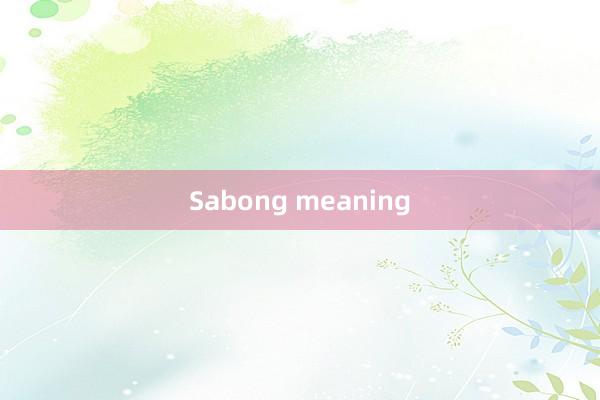

Sabong, often known as cockfighting, is a centuries-old tradition in the Philippines that has woven itself into the cultural tapestry of the nation. While viewed differently around the world, in the Philippines, Sabong is a deeply respected practice, a gathering of community, tradition, and a striking showcase of skill. So, what is Sabong, and why does it resonate so profoundly with Filipinos?
Understanding the Meaning and Essence of Sabong
The word "Sabong" may seem simple, but it carries a world of meaning. Sabong is not just cockfighting; it is an event that unites communities, stirs excitement, and embodies a cultural legacy. At its core, Sabong is the practice of pitting two roosters—often selectively bred and meticulously trained—against each other in a competitive fight. With origins that go back thousands of years, this practice has evolved from a mere pastime to a major cultural event with various aspects tied to Filipino heritage, identity, and values.
The History and Origins of Sabong
Sabong's roots trace back to pre-colonial times, with ancient tribes using it not only as a form of entertainment but also as a religious ritual. Early Filipinos believed that cockfighting held spiritual significance, often performed as part of tribal ceremonies to appease the gods or celebrate harvests and battles won. When the Spaniards colonized the Philippines, they observed Sabong’s popularity and officially recognized it, regulating it as a legal form of entertainment.

Over the centuries, Sabong continued to thrive as an integral part of Filipino life. It became a common social activity and a popular betting game. By the 20th century, Sabong had grown into a multi-million peso industry, with official cockfighting arenas called "cockpits" spread across cities and rural towns alike. Today, Sabong remains a celebrated event, often associated with a sense of pride and a remarkable sense of camaraderie.
The Modern Appeal of Sabong
In modern times, Sabong is still as popular as ever, not only among locals but also among international enthusiasts who travel to the Philippines specifically to witness this spirited spectacle. More than just an opportunity for competition, ph365 Sabong is now seen as a cultural experience—a chance to participate in an event that encapsulates both the thrill of sport and the pride of Filipino heritage.
Each Sabong match is a dramatic scene of high energy, sex châu âu địt chị gái with crowds cheering on their favored roosters. The atmosphere is intense,play go88 win with an electric blend of excitement, adrenaline, and, for many, a sense of nostalgia for a tradition passed down through generations. Many Filipinos also view Sabong as an art form, as the skills involved in training and caring for the roosters require patience, knowledge, and dedication. Trainers, often referred to as "mananari," see their role as both a science and a passion, embodying the dedication that elevates Sabong beyond a mere game to an art steeped in cultural pride.
Sabong as a Social Gathering
 777pnl login
777pnl loginOne of the most compelling aspects of Sabong is its role as a social gathering, bringing people together from all walks of life. In every Sabong arena, friends, families, and even strangers find common ground, sharing in the excitement and camaraderie that surrounds each match. For many Filipinos, attending a Sabong match is not merely about watching a cockfight; it is about connecting with others, sharing stories, and enjoying a shared experience that binds the community together.
The sense of unity and social engagement found at a Sabong match is unparalleled. Conversations flow freely, and bonds are formed as people exchange tips, strategies, and tales of past Sabong events. It’s a place where both rural and urban communities meet, fostering connections across social classes and generations. In this way, Sabong serves as a bridge between tradition and modernity, between the past and the present.
The Cultural Symbolism of Sabong
To the Filipino people, Sabong represents more than just a sport—it’s a symbol of resilience, skill, and pride. Roosters, in Filipino culture, are often associated with strength, bravery, and persistence, mirroring the Filipino spirit. Each Sabong match can be seen as a metaphor for the country’s history: enduring hardship, showing resilience, and striving for victory despite the odds. Just as the roosters fight with unyielding determination, so do Filipinos in their daily lives.
The Sabong experience also celebrates discipline and respect. The training of roosters requires commitment and care, which in turn garners respect for the animal and the sport. Though some may see it as controversial, for many Filipinos, Sabong is approached with reverence. It’s not merely about the fight; it’s about honoring the effort that goes into preparing both the roosters and the trainers.
Contemporary Sabong and the Future
As technology advances, Sabong has taken on new forms, including digital platforms where enthusiasts can watch live matches from anywhere in the world. These platforms have opened doors for a new generation of fans who may not have easy access to local cockpits but still want to connect with the tradition. This modernization of Sabong has expanded its reach, allowing it to thrive in an age where cultural preservation is more important than ever.
Despite debates over animal welfare, the Sabong industry has taken steps to address concerns, promoting humane practices and enforcing stricter regulations to ensure the sport is conducted responsibly. As the practice evolves, it aims to strike a balance between respecting tradition and adapting to contemporary ethical standards.
Conclusion: A Legacy of Resilience and Culture
In essence, Sabong is more than just a sport in the Philippines. It’s a living cultural heritage that showcases the passion, resilience, and unity of the Filipino people. Though its place in society may be evolving, Sabong remains a proud emblem of Filipino identity, offering a unique look into the country’s past and a hopeful glimpse into its future. For Filipinos and visitors alike, Sabong stands as a tradition that, much like the roosters themselves, refuses to back down—an unbroken thread of Filipino heritage that continues to endure.


